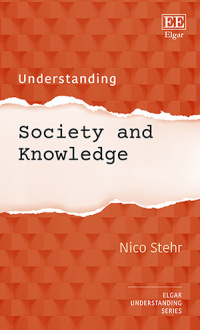
Hardback
Handbook of Innovation and Regulation
This comprehensive Handbook presents thoughtful analysis on how regulations can impact innovation within a number of regulatory fields and markets, and provides a greater understanding of regulatory complexity and the challenging task it presents for future research.
More Information
Contributors
More Information
This comprehensive Handbook presents thoughtful analysis on how regulations can impact innovation within a number of fields and markets, and provides a greater understanding of regulatory complexity and the challenging task it presents for future research.
The Handbook of Innovation and Regulation embraces some of the key policy areas such as the regulation of markets, critical sectors and global and regional aspects, focussing particularly on those regulations which target innovation. Reviewing these often interconnected policy areas in terms of both macroeconomic and microeconomic issues, this Handbook expertly studies how regulations in differing fields can affect innovative activities. By placing innovation centre stage, the contributors emphasise the direct and indirect effects of imposed regulations. Further, they illustrate the critically important overall impact of innovation to make firms competitive, promote economic growth and increase societal welfare.
Addressing research and policy challenges, this Handbook would be an excellent resource for academics in regulatory economics, innovation and entrepreneurship, international trade, regional economics as well as environment and digitization and policymakers in both national and international organisations.
The Handbook of Innovation and Regulation embraces some of the key policy areas such as the regulation of markets, critical sectors and global and regional aspects, focussing particularly on those regulations which target innovation. Reviewing these often interconnected policy areas in terms of both macroeconomic and microeconomic issues, this Handbook expertly studies how regulations in differing fields can affect innovative activities. By placing innovation centre stage, the contributors emphasise the direct and indirect effects of imposed regulations. Further, they illustrate the critically important overall impact of innovation to make firms competitive, promote economic growth and increase societal welfare.
Addressing research and policy challenges, this Handbook would be an excellent resource for academics in regulatory economics, innovation and entrepreneurship, international trade, regional economics as well as environment and digitization and policymakers in both national and international organisations.
Contributors
Contributors include: Carlo Altomonte, Martin Andersson, Pierluigi Angelino, Ezgi Ari, David Audretsch, Jeremy de Beer, Pontus Braunerhjelm, Knut Blind, Kenneth J. Button, Dirk Czarnitzki, Robert Eberhart, Håkon Endresen Normann, Johan Eklund, Jan Fagerberg, Kun Fu, Mads Greaker, Malcolm Harbour, Birgitte Hovdan, Maurice Kugler, Oishee Kundu, Stephanie Lang, Hans Lind, Maria Luisa Mancusi, Martin Mandorff, Maria Minniti, Sten Nyberg, Raquel Ortega-Argiles, Almantas Palubinskas, Jacques Pelkmans, David C. Popp, Andrea Renda, Andreas Pyka, Nikolaus Thumm, Elvira Uyarra, Sacha Wunsch-Vincent




